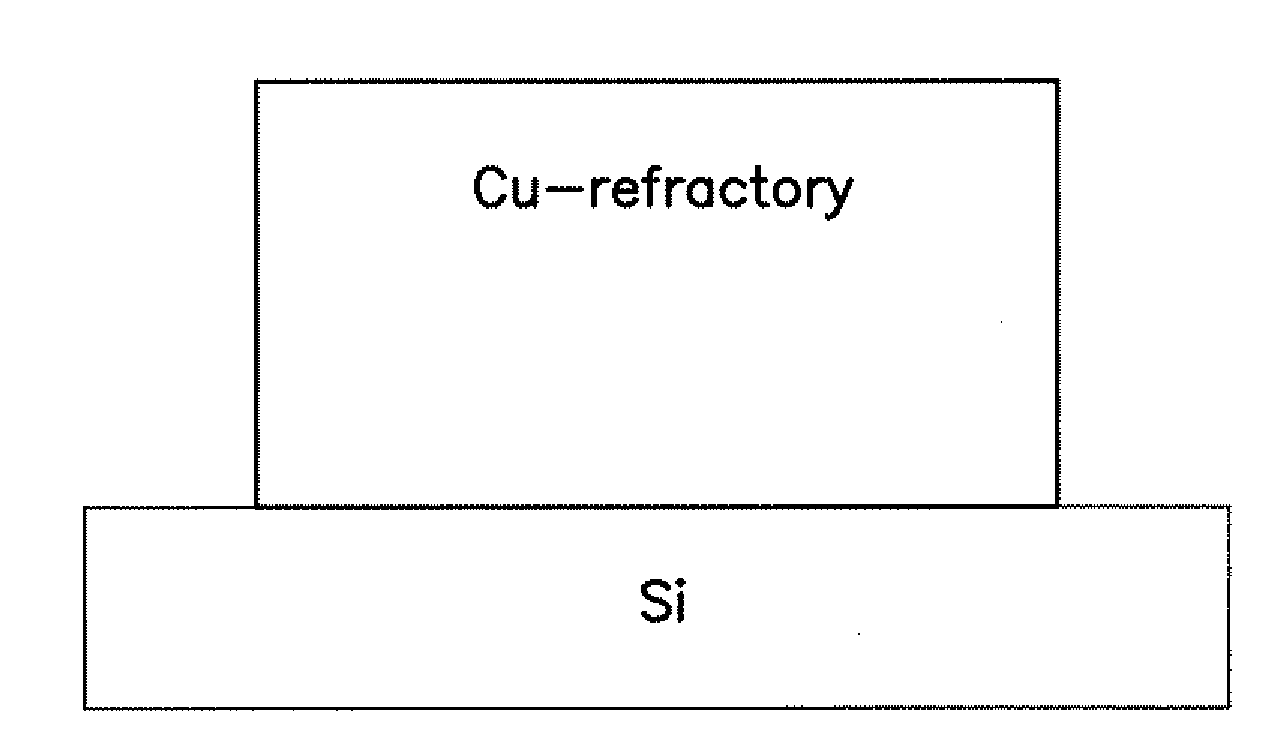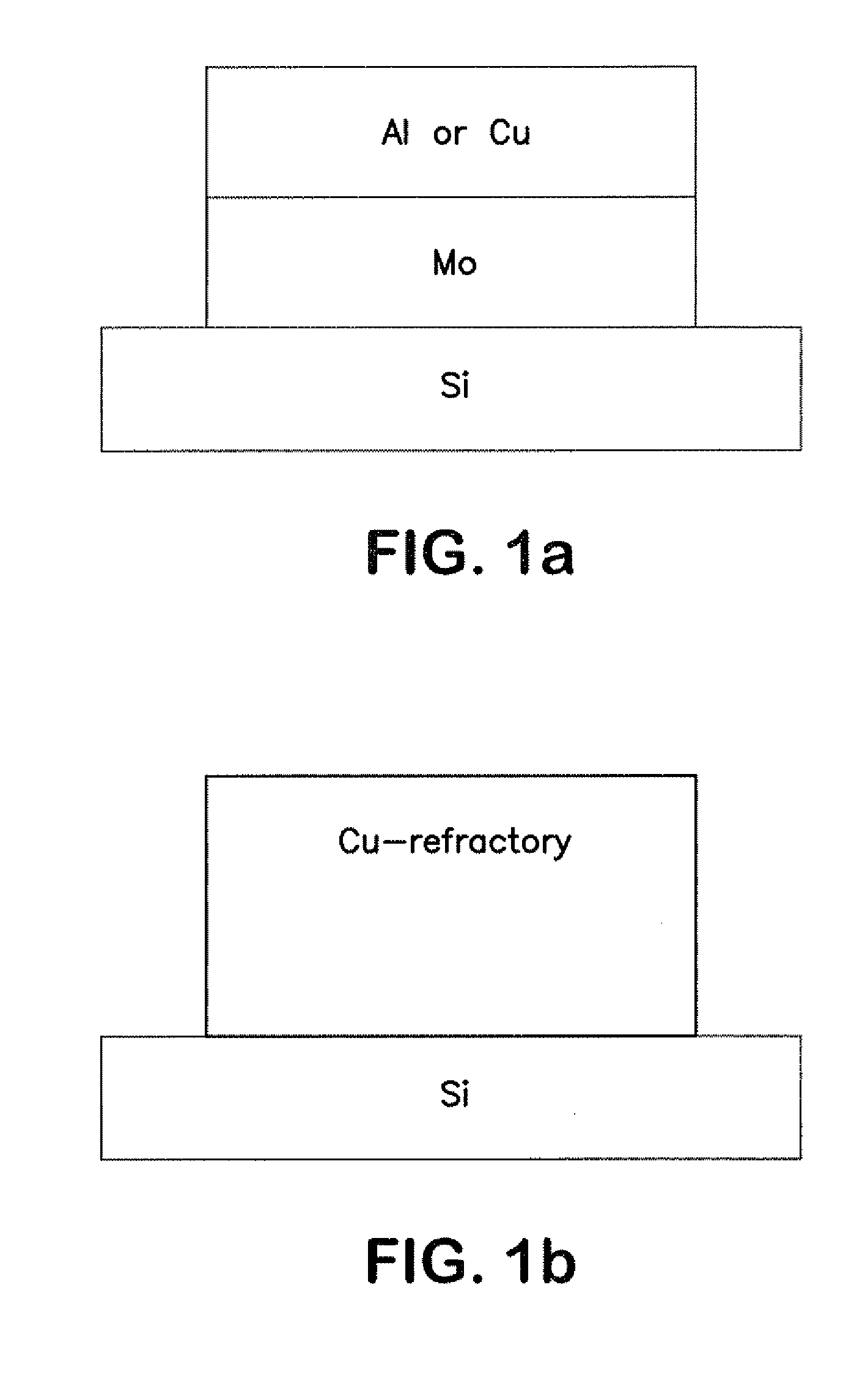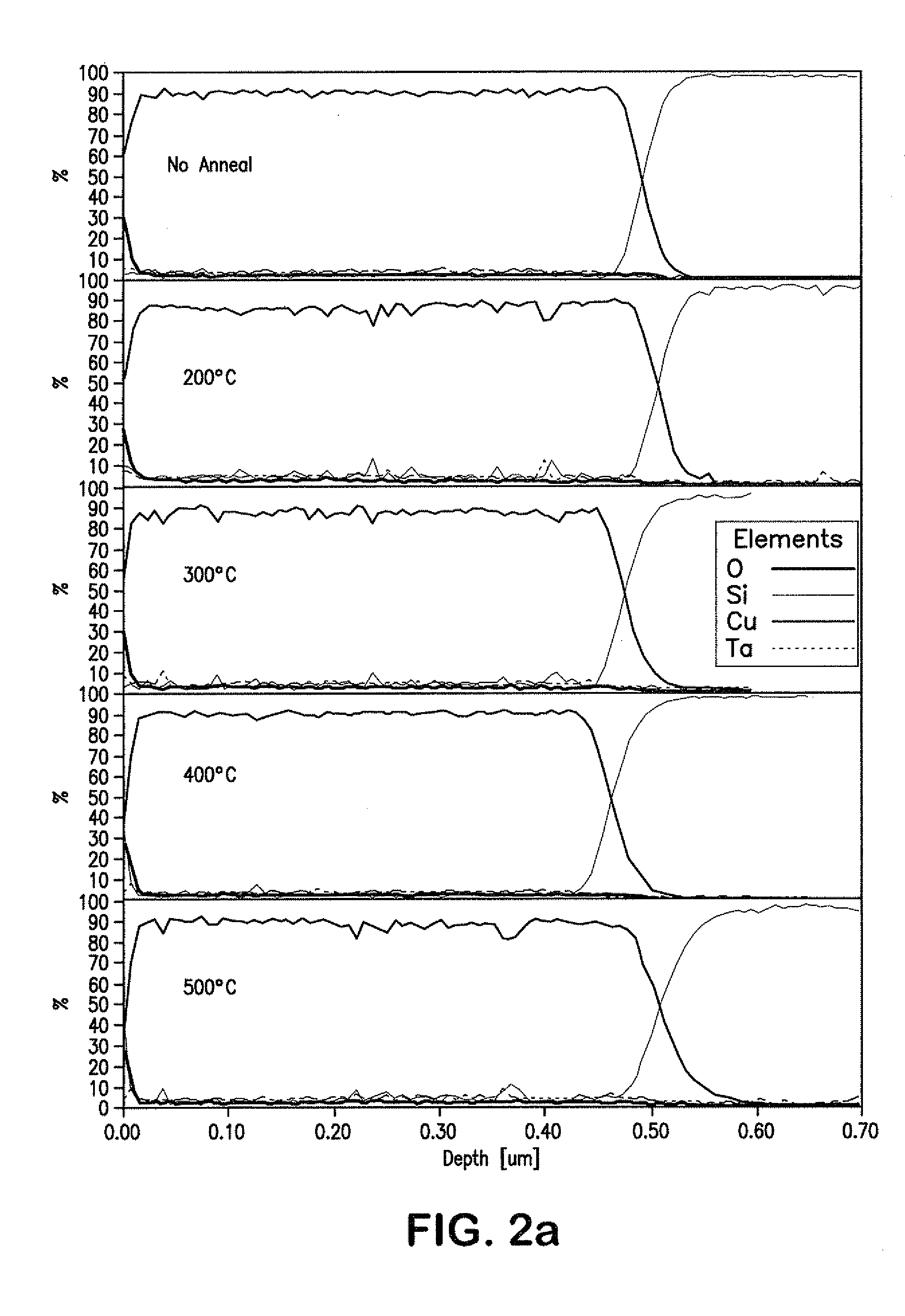Refractory metal-doped sputtering targets, thin films prepared therewith and electronic device elements containing such films
a technology of refractory metal and sputtering target, which is applied in the direction of diaphragms, metallic material coating processes, conductive materials, etc., can solve the problems of reducing throughput, increasing materials, equipment and manpower, and voids and other deleterious defects, etc., to achieve the effect of reducing diffusion and resistivity
- Summary
- Abstract
- Description
- Claims
- Application Information
AI Technical Summary
Benefits of technology
Problems solved by technology
Method used
Image
Examples
examples 1-4
Control, Examples 1-4 and Comparative Examples 5-7
Thin Film Evaluation
[0070]Initially, a copper powder was provided (Control Sample, Pure Cu) and seven powders were prepared (Inventive Example 1, Cu—Ta; Inventive Example 2, Cu—Cr; Inventive Example 3, Cu—Ta / Cr; Inventive Example 4, Cu—Ni; and Comparative Examples 5, 6 & 7, Cu—Mo, Cu—W and Cu—Ta / Si, respectively) by dry blending copper powder, CuLox® type 620, normal 20 μm (commercially available from CuLox Technologies, Inc., Naugatuck, Conn.), with Ta, Cr, Ni, Si, Mo and / or W powder, as designated above, in amounts of 0.1 to 6% by weight. The tantalum powder used was H. C. Starok NH230 capacitor grade powder, available from H. C. Starck, Inc. Newton, Mass.). The chromium powder used was 325-mesh powder commercially available from Alfa / Aesar. The molybdenum powder used was H. C. Starek type MMP-OMFP, normal 5 μm, available from H. C. Starok, Inc. (Newton, Mass.). The tungsten powder used was H. C. Starck WMP normal 3.5 μm, available...
PUM
| Property | Measurement | Unit |
|---|---|---|
| temperature | aaaaa | aaaaa |
| pressure | aaaaa | aaaaa |
| temperature | aaaaa | aaaaa |
Abstract
Description
Claims
Application Information
 Login to View More
Login to View More - R&D
- Intellectual Property
- Life Sciences
- Materials
- Tech Scout
- Unparalleled Data Quality
- Higher Quality Content
- 60% Fewer Hallucinations
Browse by: Latest US Patents, China's latest patents, Technical Efficacy Thesaurus, Application Domain, Technology Topic, Popular Technical Reports.
© 2025 PatSnap. All rights reserved.Legal|Privacy policy|Modern Slavery Act Transparency Statement|Sitemap|About US| Contact US: help@patsnap.com



